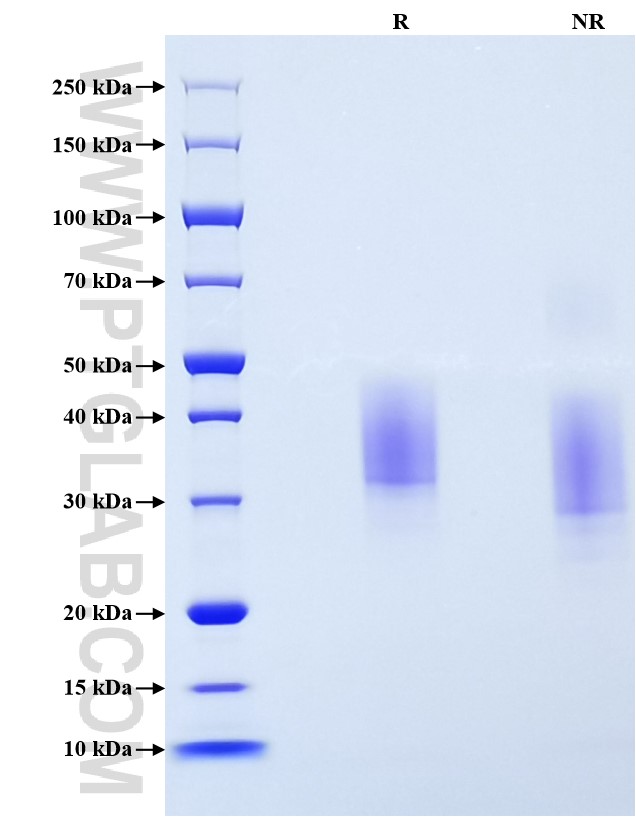Recombinant Human EMMPRIN/CD147 protein (His Tag)
ED50
/
Species
Human
Purity
>95 %, SDS-PAGE
GeneID
682
Accession
P35613-1
验证数据展示
Technical Specifications
| Purity | >95 %, SDS-PAGE |
| Endotoxin Level | <1.0 EU/μg protein, LAL method |
| Biological Activity |
Not tested |
| Source | HEK293-derived Human EMMPRIN protein Glu138-Ala323 (Accession# P35613-1) with a His tag at the C-terminus. |
| Predicted Molecular Mass | 24.5 kDa |
| SDS-PAGE | 32-45 kDa, reducing (R) conditions |
| Formulation | Lyophilized from sterile PBS, pH 7.4. Normally 5% trehalose and 5% mannitol are added as protectants before lyophilization. |
| Reconstitution | Briefly centrifuge the tube before opening. Reconstitute at 0.1-0.5 mg/mL in sterile water. |
| Storage |
It is recommended that the protein be aliquoted for optimal storage. Avoid repeated freeze-thaw cycles.
|
| Shipping | The product is shipped at ambient temperature. Upon receipt, store it immediately at the recommended temperature. |
Background
CD147, also known as Basigin or extracellular matrix metalloproteinase inducer (EMMPRIN), is a transmembrane glycoprotein that belongs to the immunoglobulin superfamily. The molecule is composed of an intracellular portion, an extracellular portion, and a single transmembrane region. CD147 is expressed on a variety of cell types (e.g., hematopoietic, epithelial, and endothelial cells) and at varying levels. Increased expression of CD147 occurs in many tumors. CD147 is a pleiotropic molecule that plays an important role in fetal, neuronal, lymphocyte and extracellular matrix development. CD147 has been identified as a receptor essential for erythrocyte invasion by Plasmodium falciparum (PMID: 22080952). It has been reported that spike protein of SARS-CoV-2 binds to CD147 on host cells, thereby mediating the viral invasion.
References:
1. C Biswas, et al. (1995) Cancer Res. 55(2):434-9. 2. Kathryn T Iacono, et al. (2007) Exp Mol Pathol. 83(3):283-95. 3. Hsiang-Chi Tseng, et al. (2020) Nat Commun. 11(1):4810. 4. Ke Wang, et al. (2020) Signal Transduct Target Ther. 5(1):283.
